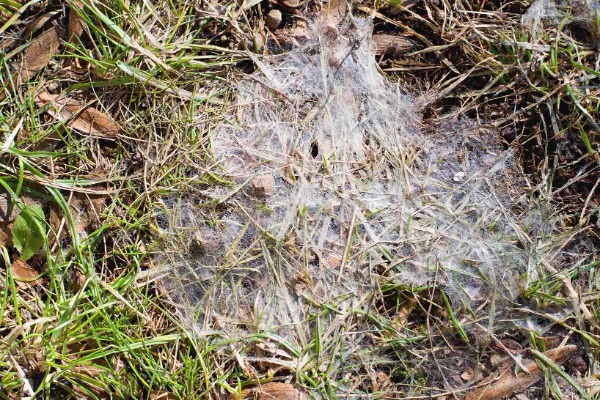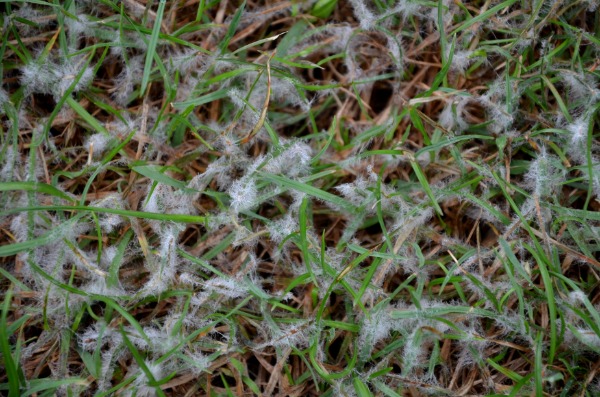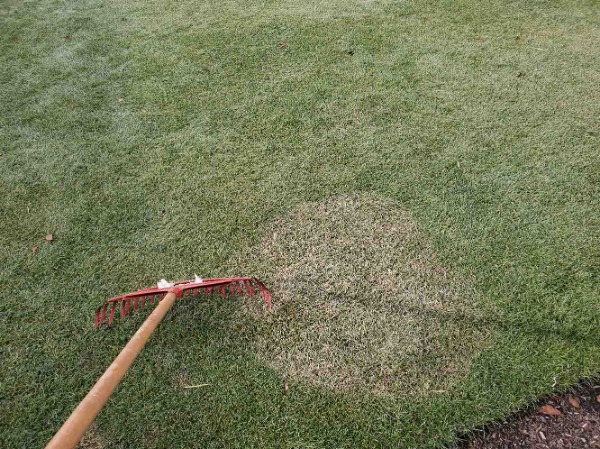Virginia’s winters can be unpredictable. Some years bring light dustings of snow that melt quickly, while others cover lawns with heavy blankets of snow for weeks. This mix of fluctuating temperatures and moisture makes it easy for a hidden problem to develop under the snow: snow mold. This fungal disease lurks unseen until the thaw, leaving homeowners puzzled about why their once-healthy lawn now looks patchy and dull.
Understanding how to recognize snow mold, what causes it, and how to prevent this lawn disease with proper lawn care techniques in Virginia!
.jpg)
Snow mold becomes visible as snow and ice melt away in late winter or early spring. Instead of a lush green carpet, you may find circles or patches of grass that look grayish-white, straw-colored, or faintly pink. These areas are typically matted down and may feel crusty or damp. When conditions stay moist, you can sometimes see a delicate fuzz or cobweb-like growth coating the blades of grass that’s the fungal mycelium responsible for the disease.
Snow mold patches can vary in size, from just a few inches to several feet. In severe cases, patches merge to form larger irregular shapes. Even after the visible fungus fades with warmer weather, the underlying turf may remain thin, weak, or slow to green up compared to the rest of the lawn. Recognizing the early signs helps you take the right steps to speed up recovery.
Telltale Signs Of Snow Mold In Virginia:
.jpg)
Most Virginia homeowners are relieved to learn that snow mold rarely kills an entire lawn outright. In many cases, especially with gray snow mold, the fungus attacks only the blades of grass rather than the crowns or roots. This means the plant’s growing point stays alive and can recover once conditions improve.
However, the more aggressive form of the disease, pink snow mold, can infect the crowns and roots of grass plants. When this happens, patches may die completely, leaving bare soil behind that requires reseeding or sodding. Even when snow mold itself doesn’t kill your lawn, it weakens grass and opens the door to pests, heat stress, and other fungal problems later in the season. Acting early and practicing good prevention dramatically reduces the risk of lasting damage.
While warm-season grasses such as bermudagrass and zoysiagrass are less susceptible, they’re also less common in many parts of Virginia due to winter temperatures. Homeowners with predominantly cool-season lawns should be especially proactive about snow mold prevention. Snow mold thrives on cool-season grasses that are commonly planted in Virginia lawns. These include:

Gray snow mold is the more common and less aggressive of the two. It is caused by fungi in the Typhula genus, which primarily attack the foliage rather than the crowns or roots. Gray snow mold typically appears as fuzzy white or gray patches after snow melts. When the lawn dries, you may notice small, hardened, antler-like structures called sclerotia within the patches. These are the fungus’s survival structures and a telltale sign of gray snow mold.
Because it affects only the leaf blades, gray snow mold usually clears up on its own once temperatures consistently rise above 40°F. The damaged grass may look unsightly for a while, but with proper care it typically recovers without permanent harm.
.jpg)
Pink snow mold, also known as Fusarium patch, is caused by a different fungus, Microdochium nivale. This variety is much more aggressive and can infect the crowns and roots of grass plants. It may display a faint pink, salmon, or reddish border around patches and can even develop without snow cover if the weather stays cool and wet.
Unlike gray snow mold, pink snow mold can cause lasting turf loss. Areas attacked by this fungus may die completely, requiring overseeding or new sod to restore the lawn. Because pink snow mold is not limited to snow-covered conditions, it can appear well into spring or early summer if moisture and temperatures remain favorable.
The fungi responsible for snow mold are always present at low levels in soil and plant debris. Understanding these triggers helps homeowners take the right preventive measures before winter sets in. The fungi become active when several conditions line up at once:

Because fungicides are not very effective on gray snow mold after it develops, the best approach is prevention. By preparing your lawn properly in fall, you reduce the conditions that let snow mold thrive under winter snow and ice.

If snow mold has already appeared, don’t panic. As Virginia’s temperatures warm, the disease often subsides on its own. Lightly rake the affected areas to lift matted grass and improve airflow. Avoid applying fertilizers or fungicides immediately after discovery, as they can sometimes aggravate the problem rather than solve it.
If large sections of your lawn remain thin or bare after the fungus clears, overseed those patches with the appropriate grass type for your region. A light topdressing of compost can also help improve soil health and speed up recovery. With a bit of patience and care, most lawns bounce back within a few weeks of warm weather.
Snow mold can be frustrating to deal with, especially when you’ve cared for your lawn all year only to see damage appear in spring. The good news is that with the right prevention and recovery practices, your turf can recover and even become stronger over time.
If you’re unsure which type of snow mold is affecting your yard or you’d like expert help applying preventive treatments, reach out to our lawn care experts here at Blue Sky. We can diagnose the issue, recommend the right strategy for your grass type, and help ensure your lawn stays healthy through winter and comes back strong in spring.